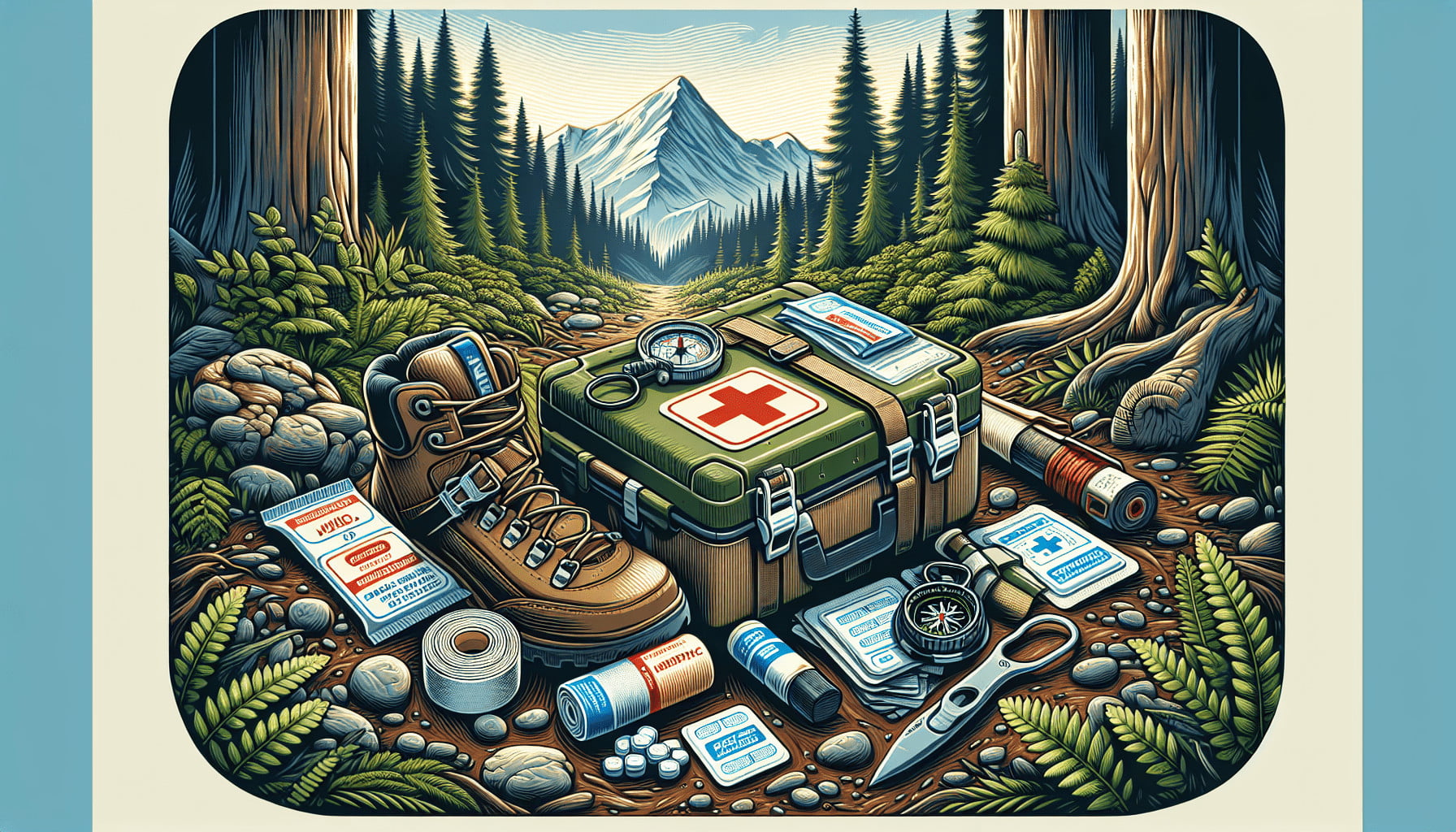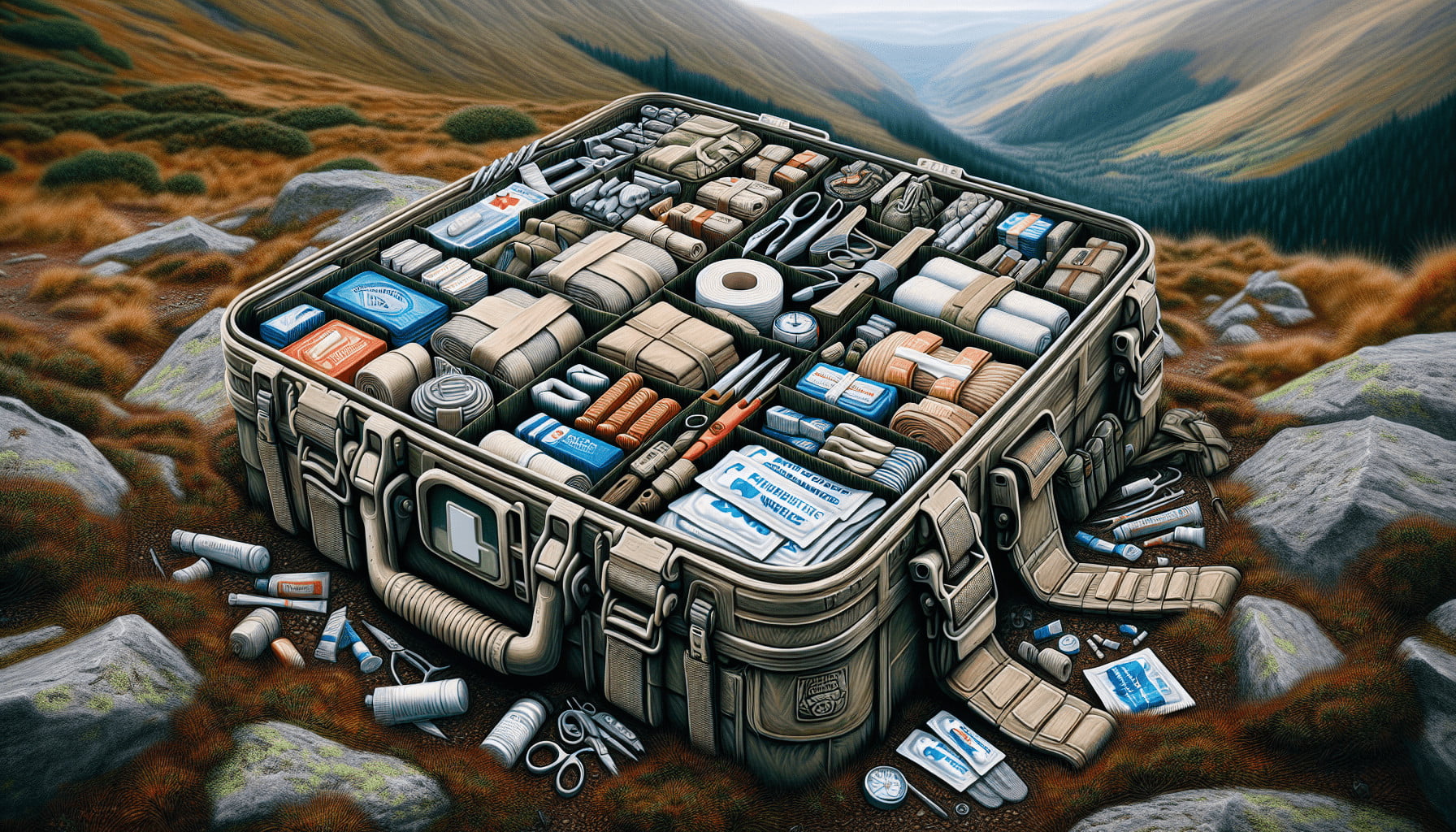When you’re out exploring the great outdoors, the last thing you want is for an injury to ruin your adventure. “Essential First-Aid Skills For Caring For Injuries In The Outdoors” is your go-to guide for learning how to handle unexpected injuries with confidence and care. In this article, you’ll discover crucial first-aid techniques that will empower you to deal with everything from minor scrapes to more serious injuries, ensuring a safer and more enjoyable experience in nature.
Whether you’re an avid hiker, camper, or enthusiastic nature lover, knowing essential first-aid skills can make all the difference in handling emergencies. This article is here to guide you through the best practices and essential first-aid skills for handling common outdoor injuries.

Why First-Aid Skills Are Crucial in the Outdoors
First-aid skills are not just for medical professionals; they are crucial for anyone who spends time outdoors. When you’re in remote areas, the availability of immediate medical help might be limited. Knowing how to address injuries effectively can save lives and prevent minor injuries from becoming major issues.
Immediate Response
The first few moments after an injury occurs are critical. Your immediate response can significantly impact the outcome. Knowing what to do and having the confidence to act quickly can reduce pain, prevent infection, and stabilize the injured person until professional help arrives.
Self-Sufficiency
Being in the outdoors often means you’re on your own. Having the right skills not only makes you more self-sufficient but also prepares you to assist others in your group. This self-reliance instills confidence and can enhance your overall outdoor experience.
Basic Principles of First Aid
Before diving into specific skills, it’s essential to understand some basic principles of first aid. These principles act as the foundation upon which all first-aid practices are built.
Assess the Situation
The first step in any first-aid scenario is to assess the situation. Look around and determine what has happened. Is the area safe? Are there any ongoing dangers, such as falling rocks or fast-moving water? Your safety is paramount. Only proceed when you are sure it’s safe to do so.
Call for Help
If the situation is severe, call for help immediately. Whether it’s reaching out to emergency services or sending someone from your group to find assistance, initiating the call for help is a priority.
Provide Care
Once it’s safe and you’ve called for help if needed, provide care to the injured person. This involves using your first-aid knowledge to address the injury efficiently.
Monitor the Injured Person
After administering first aid, keep a close watch on the injured individual. Continue to monitor their condition, level of consciousness, breathing, and pulse until professional help arrives.
Essential First-Aid Skills and Techniques
Now that we’ve covered the basics, let’s dive into the specific skills essential for outdoor first aid. Each skill and technique is crucial for different types of injuries you might encounter in the wild.
Wound Care
Wounds are common in the outdoors, ranging from minor cuts to more severe lacerations. Proper wound care can prevent infection and promote healing.
Steps for Wound Care
- Clean the wound: Rinse the wound with clean water to remove dirt and debris.
- Apply antiseptic: Use an antiseptic wipe or solution to disinfect the wound.
- Cover the wound: Use sterile gauze or a bandage to cover the wound.
- Change dressings: Regularly change dressings and check for signs of infection.
Table 1: Wound Care Supplies
| Item | Purpose |
|---|---|
| Sterile Gauze | To cover and protect the wound |
| Antiseptic Wipes | To disinfect and clean the wound |
| Adhesive Bandages | To secure the dressing and protect minor cuts |
| Tweezers | To remove debris from the wound |
| Antibiotic Ointment | To prevent infection and aid in healing |
Sprains and Strains
Outdoor activities often involve physical exertion, increasing the risk of sprains and strains. Knowing how to address these injuries can prevent further damage and promote quicker recovery.
Steps for Treating Sprains and Strains
- Rest: Encourage the injured person to rest the affected area.
- Ice: Apply ice wrapped in a cloth to reduce swelling and pain.
- Compress: Use an elastic bandage to compress the area gently.
- Elevate: Elevate the injured limb above heart level to reduce swelling.
Fractures and Dislocations
Fractures and dislocations are more severe and require immediate attention. Proper care can prevent complications and ease the pain until professional help is available.
Steps for Treating Fractures and Dislocations
- Immobilize the area: Use a splint or any rigid material to immobilize the injured limb.
- Apply a cold pack: Use ice to reduce swelling and numb the pain.
- Seek medical help: Get the injured person to a medical facility as soon as possible.
Heat-Related Illnesses
Heat-related illnesses, such as heat exhaustion and heat stroke, are prevalent during outdoor activities, especially in hot climates. Recognizing the symptoms and administering first aid promptly is crucial.
Types of Heat-Related Illnesses
| Illness | Symptoms | Treatment |
|---|---|---|
| Heat Exhaustion | Fatigue, dizziness, heavy sweating, nausea | Move to a cool place, hydrate, apply cool cloths |
| Heat Stroke | Confusion, lack of sweating, high body temperature | Call for emergency help, cool person, hydrate if possible |
Hypothermia and Frostbite
Adverse cold weather conditions can lead to hypothermia and frostbite, both of which are serious and require immediate care.
Steps for Treating Hypothermia
- Move to a warm place: Get the person out of the cold immediately.
- Remove wet clothing: Wet clothes can exacerbate hypothermia.
- Warm the body: Use blankets, warm drinks, and body heat to gradually warm the person.
Steps for Treating Frostbite
- Warm affected area: Use warm (not hot) water to warm the frostbitten area slowly.
- Avoid rubbing: Do not rub the frostbitten area, as this can cause further damage.
- Seek medical attention: Consult a healthcare professional for severe cases.
Insect Bites and Stings
Insect bites and stings can range from mild irritations to severe allergic reactions. Knowing how to treat these can improve comfort and prevent complications.
Steps for Treating Insect Bites and Stings
- Remove stinger: If there’s a stinger, remove it carefully using a flat object like a credit card.
- Clean the area: Use soap and water to clean the affected area.
- Apply ice: Use an ice pack to reduce swelling and discomfort.
- Monitor for allergic reactions: Be alert for symptoms like difficulty breathing or swelling of the face and neck, and seek medical help if necessary.
Poisonous Plants
Coming into contact with poisonous plants like poison ivy, oak, or sumac can cause painful skin reactions. Knowing how to treat exposure can alleviate discomfort and prevent the rash from spreading.
Steps for Treating Exposure to Poisonous Plants
- Clean the skin: Wash the affected area with soap and water as soon as possible.
- Apply calamine lotion: Use calamine lotion or hydrocortisone cream to relieve itching.
- Avoid scratching: Scratching can worsen the rash and introduce infection.
Snake Bites
Snake bites can be dangerous and require immediate action. Your response can significantly impact the outcome, especially in wilderness settings.
Steps for Treating Snake Bites
- Keep the victim calm: Anxiety can increase the spread of venom.
- Immobilize the bitten limb: Keep the limb at or slightly below heart level.
- Seek medical help: Get the victim to a medical facility as soon as possible.
Building a First-Aid Kit for the Outdoors
A well-equipped first-aid kit is a must-have for any outdoor adventure. It should be tailored to the type of activity and the environment you’ll be in.
Essential Items for Your First-Aid Kit
| Item | Purpose |
|---|---|
| Adhesive Bandages | For covering minor cuts and abrasions |
| Sterile Gauze Pads | For covering larger wounds |
| Antiseptic Wipes | For cleaning wounds |
| Tweezers | For removing splinters or debris |
| Scissors | For cutting tape, gauze, or clothing |
| Elastic Bandages | For wrapping sprains and strains |
| CPR Face Shield | For performing CPR safely |
| Pain Relievers | For alleviating pain |
| Antihistamines | For allergic reactions |
| Hydrocortisone Cream | For relieving itching from bug bites or rashes |
| Emergency Blanket | For providing warmth in case of hypothermia |
| Splinting Material | For immobilizing fractures or sprains |
| Adhesive Tape | For securing bandages and splints |
| Cold Pack | For reducing swelling and pain |
| First Aid Manual | For guiding through treatments and procedures |
Customizing Your Kit
Depending on your specific needs and the activities you plan to undertake, you might want to add other items, such as:
- Electrolyte Tablets: For preventing dehydration during long hikes.
- Burn Gel: For treating minor burns.
- Irrigation Syringe: For cleaning wounds.
Storing and Maintaining Your First-Aid Kit
Keep your first-aid kit in a waterproof container and store it in an easily accessible location. Regularly check your kit and replace any used or expired items to ensure it’s always ready when you need it.

Training and Practice
Knowing what to do in theory is one thing; being able to do it under pressure is another. This is where training and practice come in.
Taking a First-Aid Course
Consider enrolling in a first-aid course, especially one focused on wilderness first aid. These courses provide hands-on experience and teach you how to deal with real-life scenarios effectively.
Regular Practice
Regular practice can help keep your skills sharp. Simulate different injuries and practice providing first aid. Include your family or outdoor companions in these practice sessions to ensure everyone knows what to do in an emergency.
Keeping Up-to-Date
The field of first aid is always evolving. Stay informed about new techniques, treatments, and recommendations by taking refresher courses and reading current first-aid literature.
Mental Preparation and Staying Calm
In addition to having the right skills and equipment, mental preparation is crucial in emergency situations. Staying calm and composed can make a significant difference in how effectively you manage an injury.
Ways to Stay Calm
- Take Deep Breaths: Deep breathing can help reduce anxiety and improve focus.
- Follow Protocols: Rely on your training and follow the first-aid steps methodically.
- Stay Positive: Maintain a positive attitude and encourage the injured person.
Helping Others Stay Calm
Your calm demeanor can help reassure the injured person and others in your group. Communicate clearly and calmly, explaining what you are doing and why.
Conclusion
Equipping yourself with essential first-aid skills for caring for injuries in the outdoors can make a world of difference. From treating wounds and sprains to managing more severe conditions like fractures and heat-related illnesses, these skills ensure you are prepared for whatever nature throws your way. Remember, the key principles involve assessing the situation, calling for help, providing care, and monitoring the injured individual until professional help arrives.
Building and maintaining a well-stocked first-aid kit, staying updated with training, and practicing regularly can help you stay prepared. Mental preparedness, staying calm, and knowing how to assist others in distress are equally crucial.
So next time you venture into the great outdoors, carry your first-aid kit, recall your training, and enjoy the adventure with the confidence that you can handle any emergency that comes your way. Safe travels!
